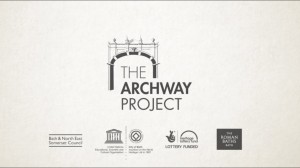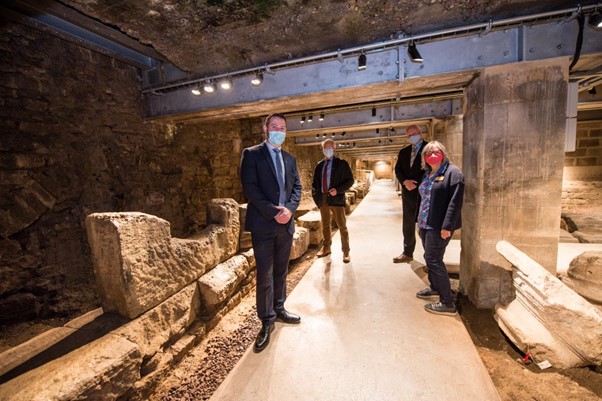Bath’s long-awaited World Heritage Centre and Roman Baths Clore Learning Centre, which will greatly enhance visitors’ appreciation of city’s history, are being fitted out ahead of opening later this year.
The two centres are part of the Archway Project, which will bring to life previously closed areas of the Baths to visitors, including a Roman gym and laconicum – a type of sauna – and an exercise courtyard with projections and sounds depicting the Roman spa experience.

Construction work on the project has now finished and the buildings handed over to Bath & North East Somerset Council by building firm Beard.
The council’s project team, working with architects Feilden Clegg Bradley Studios, which has an office in Bath, will now focus on the fit-out.
The World Heritage Centre in York Street will have free admission and show visitors why Bath is so special. They will be able to pick up trails and guides to help them explore the World Heritage city.
The Roman Baths Clore Learning Centre will be for pre-booked school and community groups and will feature three state-of-the-art learning rooms, and a hands-on investigation zone set among real Roman remains.
The Archway Project is funded by the National Lottery Heritage Fund.
Council leader Kevin Guy said: “After a huge amount of hard work by the project team, architects and construction company, it’s wonderful to see the buildings looking so spectacular.

“There is still more work to be done, but we look forward to opening these three areas to the public later this year.”
Cabinet member for children and young people, communities and culture, Cllr Dine Romero, added: “About 15,000 school children and community groups are expected to use the Roman Baths Clore Learning Centre every year.
“The new, purpose-built facilities will improve the quality of their visit to the Roman Baths dramatically, with specially designed learning rooms and a hands-on investigation zone which will offer a memorable experience for primary school children.”
Swindon-based Beard as a long track record of working on heritage buildings.
Mike Hedges, director in its Bristol office, said: “It is extremely rare that anybody gets to go to work every day among 2,000-year-old remains, which are literally part of the fabric of our nation’s history.
“Of course, the Romans were renowned for their innovative building and engineering skills. So as a construction firm with a specialism in the heritage sector, it was a truly unique experience to work among the remains of their construction work.
“It is a project that will bring this fascinating part of our history to life for future generations and we’re proud to have played our part in making that happen.”
Pictured, from left: Council leader Kevin Guy, World Heritage Centre manager Tony Crouch, head of heritage services Stephen Bird and learning and participation manager Lindsey Braidley




















